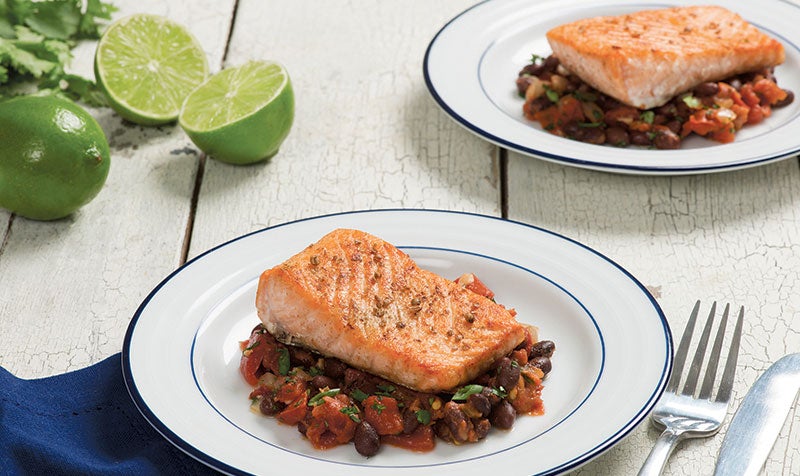4 terms to know when buying salmon
Published 6:31 am Saturday, December 8, 2018
The seafood counter can be overwhelming. How do you know if the salmon you’re eyeing was sustainably sourced? Is it better to buy wild caught or farm raised? And which is better for you … and for the ocean?
Wild caught
Wild-caught salmon are as the term implies—caught from their wild habitat, and usually by small-ish fishing operations. It also means the fish are raised on a natural diet, which contributes to their notably complex flavor and characteristic red-orange color. Wild-caught salmon are often leaner and lower in calories than farm-raised salmon, but they also come at a higher price.
Farm-raised
If your salmon says farm-raised, it means just that. It was raised in an aquatic farm, also called an aquaculture. Farms may vary in size and practices, such as what they feed the salmon. The difference in diet may explain several nutritional differences. Some farm-raised salmon may be higher in omega-3s and vitamin C; while wild-caught may be higher in calcium, potassium, iron, and zinc. Both farm-raised and wild caught salmon may carry a risk for exposure to environmental toxins, but studies show the benefits of salmon outweigh the risk.
Fair trade certified
If your salmon is Fair Trade Certified—the green and black logo—that means the fishermen and workers received fair compensation and wages for their work. It also means practices were put into place for safer working conditions, environmental protection, and community development for healthcare, education, and clean water.
Responsible choice
Seafood with the Responsible Choice logo has been rated as either a “Best Choice” or “Good Alternative” by the Monterey Bay Aquarium Seafood Watch program, or are certified to an environmental standard benchmarked to these ratings. In other words, a Responsible Choice designation means that salmon and other types of seafood are not being overfished or sourced in a way that’s harmful to the environment.
Cumin-scented Salmon with Black Bean Stew
All you need
Salmon
- 2 tbsp. Hy-Vee Select olive oil, divided
- 1 tbsp. Hy-Vee ground cumin
- 1 tbsp. coriander seed, crushed
- Hy-Vee salt, to taste
- Hy-Vee ground black pepper, to taste
- 1 lbs. salmon filet
Black Bean Stew
- ¼ c. yellow or white onion, chopped
- 2 tbsp. garlic, chopped
- 1 poblano pepper, chopped
- Hy-Vee red pepper flakes, to taste
- 1 (14.5-oz.) can chopped tomatoes
- 1 (15.5-oz.) can Hy-Vee no-salt-added black beans, drained and rinsed
- 1½ c. water
- 1 tbsp. fresh cilantro, chopped
- Green onions, chopped
- 1 fresh lime, juiced
All you do
- Heat 1 tablespoon olive oil in a heavy skillet on medium heat.
- Mix together cumin and coriander seed in a small bowl; season salmon with spices and salt and pepper. Save some spice mix.
- Add salmon to skillet and cook on each side for 3 to 4 minutes until it easily flakes with a fork (145 degrees).
- Meanwhile, for the Black Bean Stew, heat remaining 1 tablespoon olive oil in another medium saucepan and add onion and garlic; cook for 3 minutes over medium heat.
- Add peppers, chili flakes, and reserved spiced mix. Cook until aroma starts to smell. Add tomatoes and allow tomatoes to start to sear. Add black beans and water. Simmer for 10 minutes. Add cilantro, green onions and lime juice. Add salt and pepper. Cook for 2 minutes.
- Place black beans in individual bowls and add salmon portion on top.
Nutrition facts per serving: 440 calories, 23g fat, 4.5g saturated fat, 60mg cholesterol, 270mg sodium, 27g carbohydrate, 9g fiber, 5g sugar, 31g protein.
Vitamin A: 20%, Vitamin C: 50%, Calcium: 20%, Vitamin D: 15%




